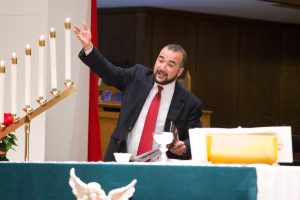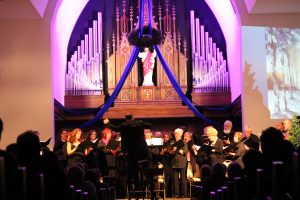Today’s post is by Omaldo Perez, Director of Music at Zoar Lutheran Church in Perrysburg, Ohio.
Grafting, as a horticultural technique, is defined as the joining of different plant tissues in a manner that makes possible their future growth together. As far as we know, grafting has been used from the times of the Fertile Crescent in Mesopotamia, and it is still widely used in our day. There are always two components in a graft: the rootstock which provides the nourishment, and the scion which bears the fruit.
In many aspects, but especially regarding my professional development, I have become a small scion grafted into the great rootstock of Lutheran worship thanks to the Association of Lutheran Church Musicians (ALCM). I joined ALCM at the behest of my pastor, George Yoder, who in 2002 correctly intuited that I needed mentoring. Fast-forward sixteen years and I can only marvel at the blessings of a journey punctuated with many face-to-face encounters with living practitioners of the craft, people who passionately care about the role of the cantor in the church. On more occasions than I can count, I have been inspired by their gracious examples as teachers and as friends.
Many, if not all the ideas that I hold dear regarding music ministry have had their genesis at an ALCM conference, either from a workshop, a plenary presentation, a choral reading session, or a book recommendation. Sometimes it was an insightful speaker that lit up my imagination. Other times, it was an imaginative and eloquent musical offering that gladdened my spirits. Very often, during our liturgies, it was the brief brush with what the poet Wallace Stevens once called “the holy hush of ancient sacrifice.”

Thanks to these ALCM experiences, I have been blessed to be a blessing to my community. At Zoar Lutheran Church we are in the process of introducing a teaching bulletin for our congregation, something we have been wanting to do for a long time. Our teaching bulletin is just the latest in a series of tweaks and small improvements. In that sense, we consider the newly designed publication the fruit of our most recent harvest.
This summer, ALCM will offer numerous Hearts, Hands, Voices local workshops for church musicians. I hope by now you have heard of the almost fifty locations nationwide where these one-day events will take place. Hopefully, there will be several workshops within driving distance of where you live and worship. Here in my little corner of Northwest Ohio, church musicians will be able to attend three different events, each offering a variety of resources and presenters. And that is only in the Cleveland-Toledo-Columbus corridor! Therefore, allow me to enthusiastically encourage you to attend and to identify others, who, like me, can benefit from these continuing education events. If a larger event appeals to you, check out the three-day Hearts, Hands and Voices conference at Valparaiso University, July 23-26, 2018.
We cannot overestimate how life-changing a mentorship can be; I am living proof of it. I am reminded of the expression, “passing it on down,” which jazz musicians use to speak of the oral tradition they embody in their playing. We have heard the apostle Paul speaking of running the good race. I would add that ours is a relay race where we learn and “pass it on down” to the next person. Learning is no small part of our vocational journey as church musicians. Fortunately for us, this education happens best not as solitary individuals, but in a community of caring and passionate people, such as the ones you will encounter at any ALCM conference. If you decide to join us for one of these special events, and we hope you do, we trust you will discover new insights into ministry, draw strength from collegial exchanges, and find yourselves, as it has been my experience, refreshed in the bonds of new friendships.



